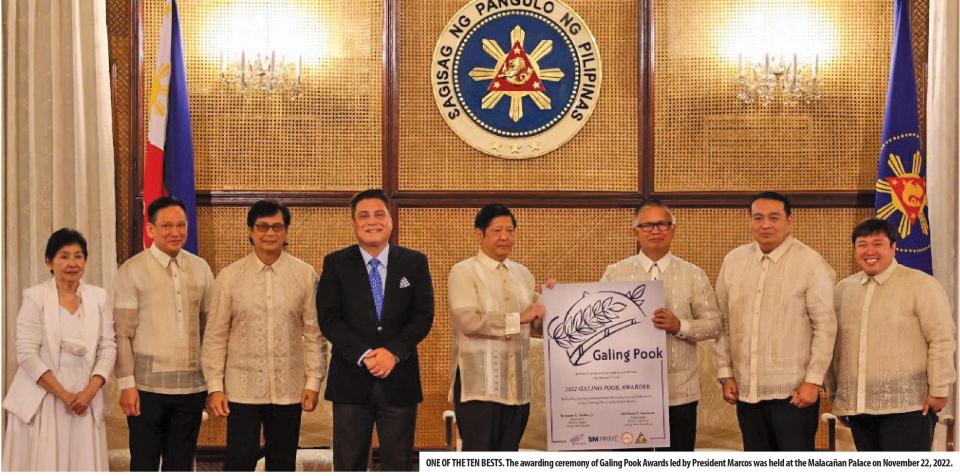First of three parts
Nearly two decades after Manila opted to maintain import caps on rice, the Philippines has yet to entertain the idea of letting go of the trade protection. When the extension for the so-called quantitative restriction (QR) on rice expired in 2012, the Philippine government declared its intention to extend it further to 2017.
During negotiations for the ratification of the World Trade Organization (WTO) in 1994, the Philippines chose to maintain the QR on rice for 10 years instead of slapping tariffs on imports. When it expired in 2004, Manila negotiated for an extension and was allowed to continue implementing it until 2012.
In requesting for the extension, Manila said the QR is vital to safeguard the livelihood of rice farmers. The Department of Agriculture (DA) said rice is the predominant staple in the Philippines and the primary source of employment for at least 2.4 million farmers, who are small landholders.
The QR on rice had allowed the government to limit the entry of cheaper rice imports, especially from neighboring Asian countries such as Thailand and Vietnam. Maintaining it, however, did not come cheap, as the Philippines had to make concessions to garner support for its bid.
For one, the minimum access volume (MAV) of rice was increased to 805,200 metric tons (MT) annually, from the previous 350,000 MT. Rice that falls within MAV is slapped a tariff of 35 percent, lower than the 40-percent tariff imposed on “out-MAV” imports.
In extending the QR on rice in 2004,
industry sources said the Philippines was forced to lower the tariff on pork offal to 5 percent from 40 percent.
In two years, the government would again have to grapple with the dilemma of whether to let go of rice-import quotas or fully open up the country’s rice market. With this in mind, the DA has started to conduct nationwide consultations on preparations for the possible removal of the QR in 2017.
Last year the DA commissioned a study on the possible impact of the QR expiration on the country’s farm sector. One of the findings of the study is that the local rice industry stands to lose P170 billion in potential income and some 11 million farmers could be displaced.
The study is a midterm assessment of the agriculture program of the government, which covered the years 2011 to 2013. Under a fully liberalized scenario, the study noted that a trade-policy shift is “vital,” entailing adjustments in the scale of imports, palay production and farm-gate prices.
In a copy of the presentation obtained by the BusinessMirror, scrapping rice-import quotas would have tremendous implications. For one, retail prices would drop to P17 a
kilogram (kg), from the current P30. Because of the stiff competition posed by cheaper imports, palay output would decline to 13 million metric tons (MMT) from 18 MMT.
Also, a liberalized rice market could cause rice imports to shoot up to 5 MMT from 600,000 MT. With the availability of cheaper rice from abroad, farm-gate prices could fall to P7.7 per kg from the current P16 per kg.
The midterm assessment also reviewed the Food Staples Sufficiency Program (FSSP) of the Aquino administration, which was rolled out in 2011. The two major goals of FSSP are increasing farm productivity and competitiveness, and enhancing economic incentives and enabling mechanisms.
The FSSP specified strategies for attaining these goals. These include strengthening price support and raising domestic procurement, allowing market forces greater role in setting retail prices, and distributing rice to poor households and victims of calamities.
To reduce rice imports, the DA had
encouraged the consumption of brown rice, white corn and root crops. The government had also launched a program to encourage consumers to avoid wasting rice.
The program also called for a shift in the National Food Authority’s (NFA) role. The DA had initially wanted the food agency to just focus on buffer stocking or local rice procurement and minimize its involvement in rice distribution and importation.
Under the FSSP, the DA sought to strengthen credit provision to small farmers via the Sikat-Saka Program and expand crop-insurance coverage.
In its assessment, the study noted that while unmilled-rice output rose in the years 2011 to 2013, production did not reach the targets set by the government. Factors, such as strong typhoons and drought, had made it difficult for the DA to hit its rice-production targets.
The study also noted that the NFA’s procurement of rice from farmers under the FSSP was lower compared to the pre-FSSP period. Part of the NFA’s mandate is to buy rice from farmers to beef up its buffer stock. In 2008, when the Philippines was affected by the global food crisis, the DA was forced to step up its purchase of palay from farmers to ensure that the food agency would have enough stocks.
Non-governmental organization Rice Watch and Action Network (R1) called on the government to act on the impending
expiration of the QR in 2017. R1 Convenor Aurora Regalado said the government needs to fast-track the implementation of initiatives aimed at improving the competitiveness of the country’s rice sector. These initiatives include expanding irrigated areas, agricultural credit and crop insurance, and providing agricultural extension services.
“The overall effect should lower the cost of production of palay, to make it competitive,” Regalado told the BusinessMirror in an interview.
A separate study disclosed that in terms of yield in irrigated and intensively cultivated areas, the Philippines is not far behind from its neighbors. The study, however, concluded that the Philippine rice sector needs more improvement.
The study, titled “Benchmarking Philippine Rice Economy Relative to Major Rice-Producing Countries in Asia,” was also commissioned by the DA, in close collaboration with the International Rice Research Institute. The study covered six Asian rice-producing countries—the Philippines, China, India, Indonesia, Thailand and Vietnam. The results of the study have yet to be discussed with stakeholders in the country’s rice sector. To be continued




































